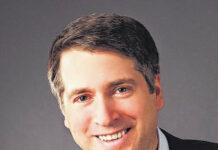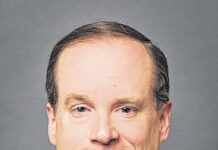RALEIGH — Politicians have two main rhetorical tools as their disposal. When they want to build rapport with voters, they use an anecdote — often about an impoverished childhood, an upwardly mobile family, or a moment of great personal triumph or tragedy. The other tool employed most often by politicians is the statistical claim. They use it to make their case for election, or to challenge the performance of their adversaries.
Much political debate, in fact, boils down to a war of competing claims about numbers. Did Barack Obama save the American economy from a second Great Depression, or did his policies produce the weakest economic recovery since World War II? Here in our state, have the fiscal and regulatory policies of Gov. Pat McCrory and the Republican-led General Assembly held North Carolina back or propelled it into the top echelon of state economies?
As these are empirical questions, not ideological ones, you might think they could be answered simply by checking the facts. The problem is that there are many different “facts” — different measures, different time frames, and different assumptions about what would have happened “but for” the public policies in contention. Should you measure economic growth by the number of jobs created, the amount of income growth, or relative unemployment rates? You get different answers depending on which measure you choose, and for what period of time.
All that assumes that the underlying statistics are actually valid. Unfortunately, they may not be. If there are flaws in the data, or in how the statistic is constructed, you can end up with a claim that is backed by an “official” report and yet useless as a guide to what’s really going on.
A common example of the problem is the official poverty rate. Having read social scientists of varying ideological stripes tear the poverty rate to shreds years ago, I no longer use it to draw conclusions about anything. Among its many defects is that much of what government does to combat poverty — such as giving people “free” health care — is not counted as income for the purposes of computing the poverty rate. So the rate doesn’t tell you as much about the living conditions of the poor as you might think.
Even when it comes to public assistance that is supposed to be counted towards at least some poverty measures, however, it turns out that the source data may be way, way off. In a new study posted by the National Bureau of Economic Research, scholars Bruce Meyer and Nikolas Mittag compared official income estimates in New York state to administrative data about New Yorkers receiving cash welfare, food stamps, and housing subsidies. For 30 percent of recipients getting housing aid, 40 percent getting food stamps, and 60 percent getting cash, their welfare participation didn’t show up in survey responses about their income.
In other words, the real incomes of large numbers of low-income New Yorkers were vastly underreported. Correspondingly, the real poverty rate was vastly overstated, particularly for single-parent households.
The problem is present across the country, including here in North Carolina, although the reporting gaps likely vary by state and program. Let me hasten to add that this is not about picking sides in the political debate about welfare. Both sides have long cited exaggerated poverty rates for their own ends. Conservatives claim that the persistence of high rates since the 1960s proves that the War on Poverty has been a colossal failure. Liberals claim that the persistence of high rates proves that American-style capitalism remains unjust.
Neither claim is true. Measured correctly — accounting for consumption rather than reported income, for example, and adjusting properly for inflation — actual rates of poverty have fallen dramatically since the 1960s, from about 30 percent to about 5 percent.
If we want to combat the remaining problems of chronic poverty successfully, we have to recognize what has already occurred, thanks both to economic growth and to past reforms. To do otherwise is to peddle political rhetoric at odds with reality.







